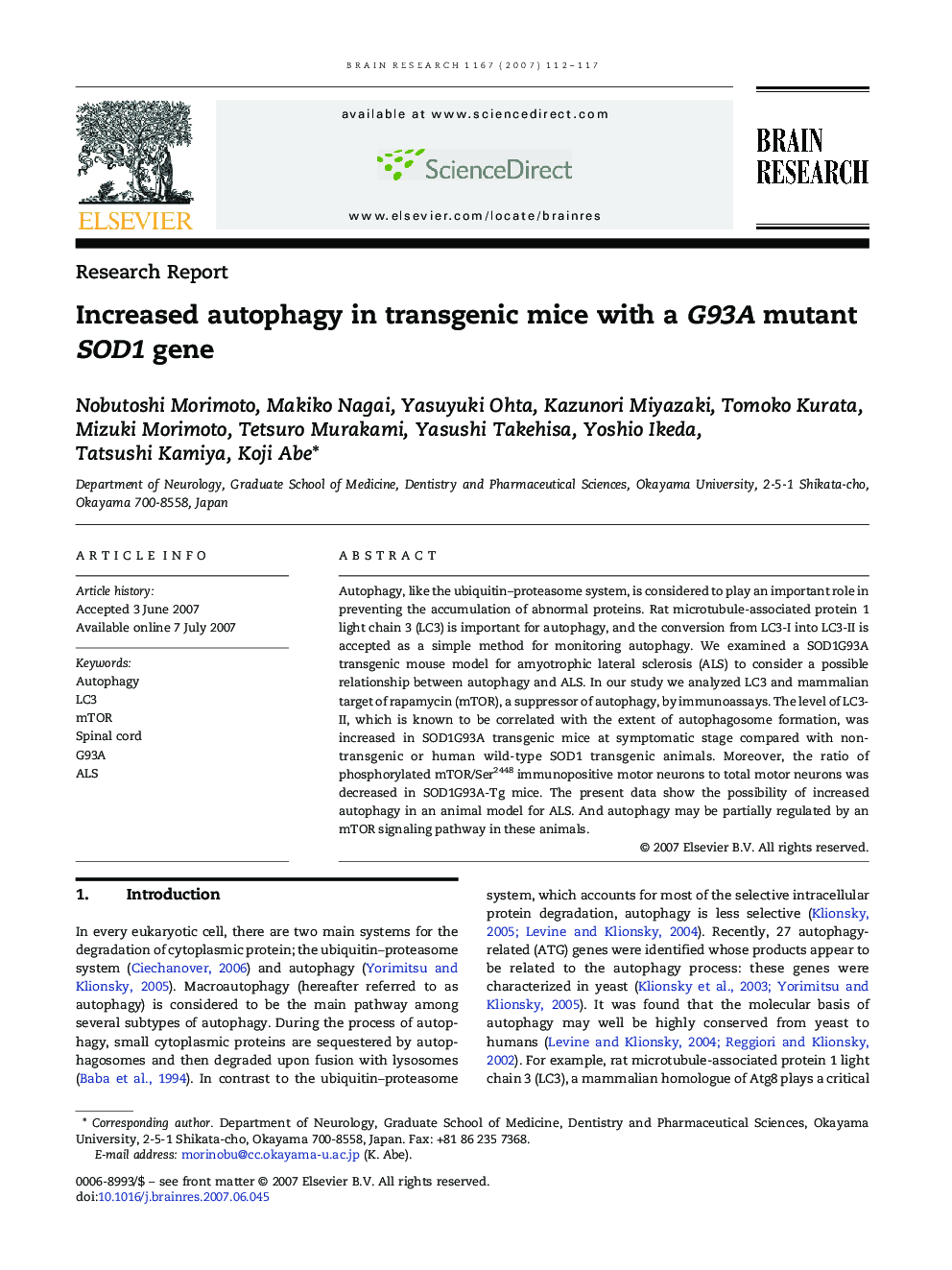| Article ID | Journal | Published Year | Pages | File Type |
|---|---|---|---|---|
| 4330723 | Brain Research | 2007 | 6 Pages |
Autophagy, like the ubiquitin–proteasome system, is considered to play an important role in preventing the accumulation of abnormal proteins. Rat microtubule-associated protein 1 light chain 3 (LC3) is important for autophagy, and the conversion from LC3-I into LC3-II is accepted as a simple method for monitoring autophagy. We examined a SOD1G93A transgenic mouse model for amyotrophic lateral sclerosis (ALS) to consider a possible relationship between autophagy and ALS. In our study we analyzed LC3 and mammalian target of rapamycin (mTOR), a suppressor of autophagy, by immunoassays. The level of LC3-II, which is known to be correlated with the extent of autophagosome formation, was increased in SOD1G93A transgenic mice at symptomatic stage compared with non-transgenic or human wild-type SOD1 transgenic animals. Moreover, the ratio of phosphorylated mTOR/Ser2448 immunopositive motor neurons to total motor neurons was decreased in SOD1G93A-Tg mice. The present data show the possibility of increased autophagy in an animal model for ALS. And autophagy may be partially regulated by an mTOR signaling pathway in these animals.
